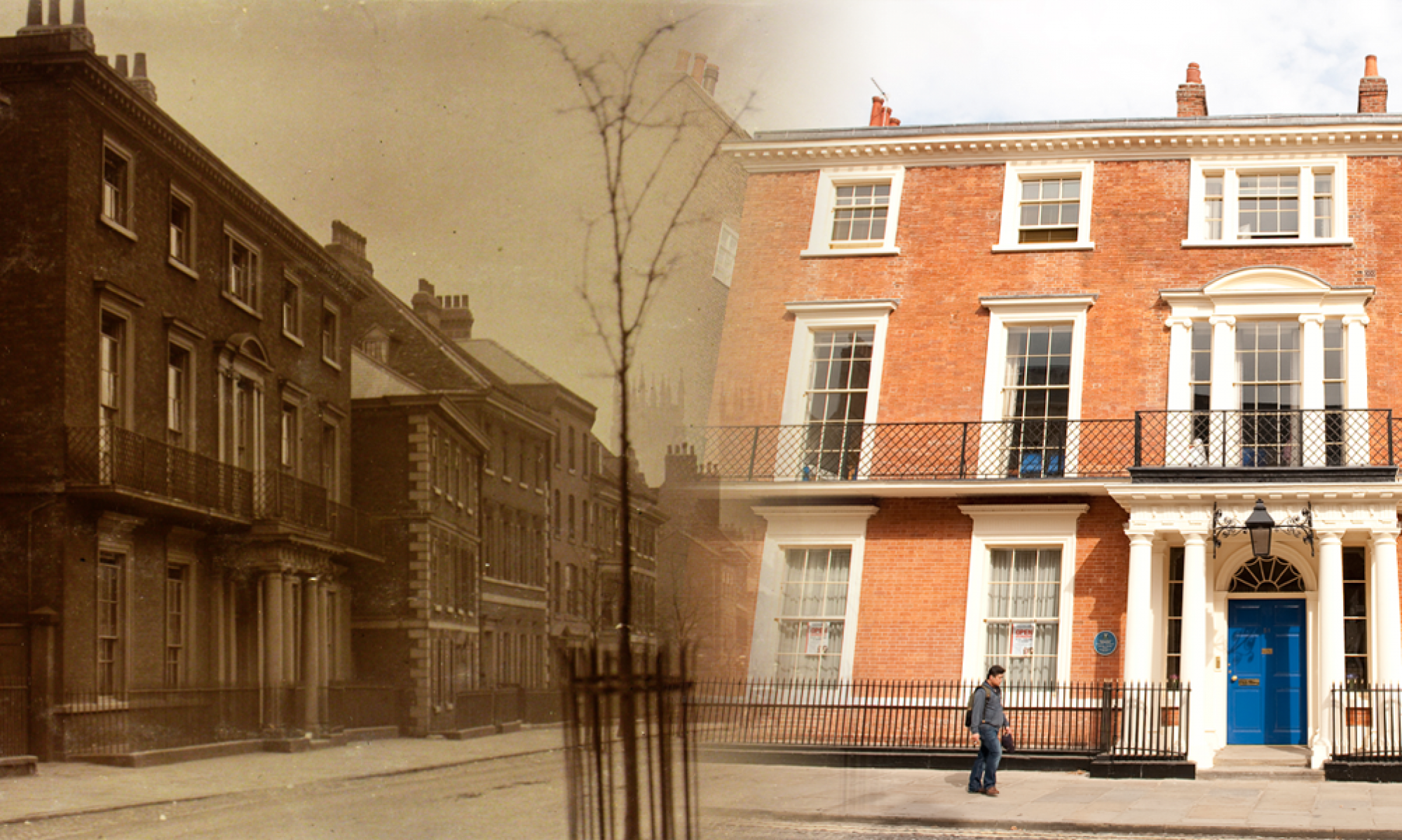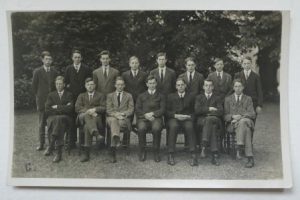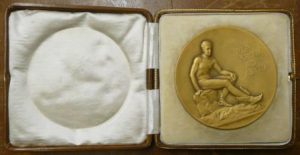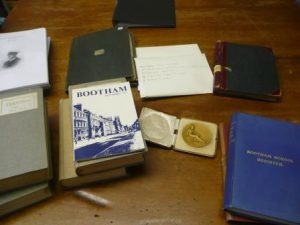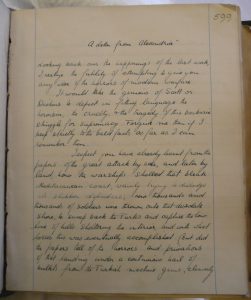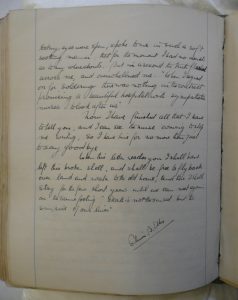This post continues from earlier posts with extracts from the 1914 edition of the Bootham School Register. Thanks to Claire, one of the volunteers, for researching the post.
Arthur Frederic Gravely (B. 1869-70)
Played in the annual cricket match with Schoolroom against the Seniors when, with I.H. Wallis as captain, they beat the Seniors in one innings: Remembers Septimus Marten’s great throw from the far side of the then adjoining field over the row of trees dividing that from the cricket field, the ball falling within a yard of the wicket: Postcards came into use whilst at Bootham, and he wrote and posted one the first day of issue to his sister at the Mount. Has a vivid recollection of J. Edmund Clark, then a teacher, learning to ride an early bicycle (“Boneshaker”) on the playground: also of a most enjoyable school excursion to Goathland, where he climbed a fir tree and brought down a nest of young squirrels for inspection, and afterwards with his clothes on slipped on a stone, and, to quote the words of an old song, “He caught a fine duck in the river”. Once when troubled with boils he went to Fielden Thorp, who welcomed him with the following “Come hither, come hither, my little boy, and do not tremble so, for I can prick the biggest boil that you ever did yet grow”.
Joseph Foster Lloyd (Lawrence St. 1844-45 and B.1846-49)
Became a Coal and Iron Merchant until his health broke down: Of rather retiring character, and as an invalid for some years before his death: At school he was a daring boy – watching a water rat in Langwith Long Lane, was greeted by John Ford with a “At him, Joe,” and without a moment’s hesitation he plunged into the ditch after the rat.
Herbert Thomas Malcolmson (1897-1900)
At Bootham under John F. Fryer and Arthur Rowntree he remembers the “fire”, when he lost quite a number of Natural History specimens – in fact, some of his skulls were in the pot left boiling, and which is thought caused the fire, although he was not in charge.
George Mennell (Lawrence St. prior to 1829)
Arranged in conjunction with Henry Binns and John Bright to run away from school to America. H.B was caught on leaving the school premises and obliged to reveal the plan. JB., who had started second, pursued and caught on Tadcaster Road. G.M reached Leeds on foot, and was there found waiting for the others at the inn whence the coach to Liverpool was to start.
